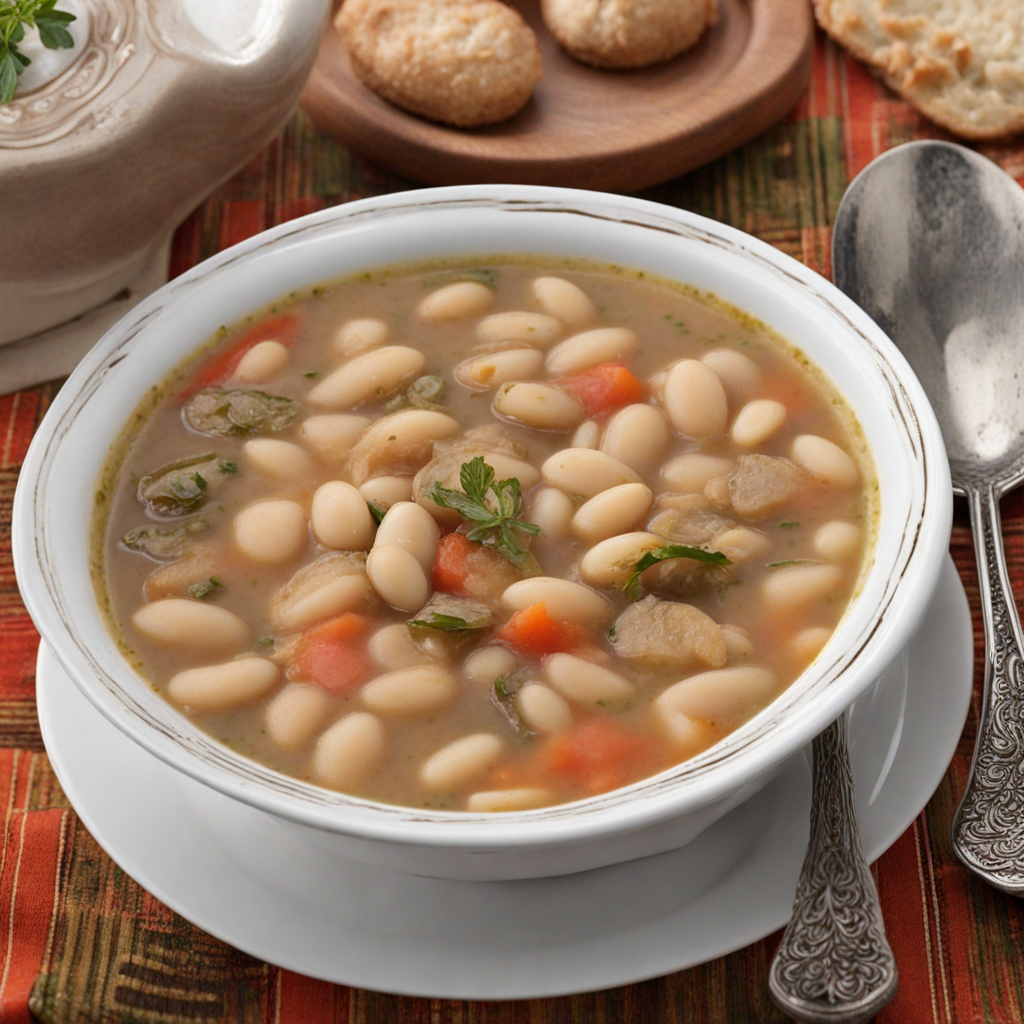Përshesh
Përshesh is a traditional Albanian dish that showcases the rustic flavors and culinary heritage of the region. At its core, Përshesh is a bread-based dish, typically made from stale bread or cornbread, which is soaked in a rich broth infused with various spices and herbs. This transformative process elevates the simple ingredients into a savory delight, offering a unique texture that is both soft and hearty. The dish is often enriched with finely chopped onions, garlic, and sometimes even meat, creating a wholesome communal meal that embodies the essence of Albanian hospitality. The beauty of Përshesh lies in its versatility, as it can be prepared in numerous ways depending on regional variations and personal preferences. Some versions feature the addition of vegetables, such as bell peppers or tomatoes, which add vibrant colors and layers of flavor. The broth is usually flavored with traditional spices like paprika, bay leaves, and black pepper, resulting in a delightful aromatic experience that tantalizes the senses. The dish can be served hot, allowing the bread to absorb all the goodness of the broth, creating a comforting meal perfect for any occasion. Përshesh is more than just a dish; it is a reflection of Albanian culture and the importance of communal dining. Often enjoyed during family gatherings or special celebrations, it brings people together around the table, fostering connection and sharing. As one takes a bite, they are not only tasting the rich flavors of the ingredients but also the stories and traditions that have been passed down through generations. Discovering Përshesh is like embarking on a culinary journey through Albania, where every mouthful reveals a slice of history and a taste of home.
How It Became This Dish
The Culinary Journey of Përshesh: A Taste of Albanian Heritage #### Origins and Historical Context Përshesh, a traditional dish from Albania, embodies the country's rich culinary heritage and the historical tapestry that has shaped its food culture. The roots of Përshesh can be traced back to the rural communities of Albania, particularly in the northern regions, where the practice of using simple ingredients to create hearty meals was a necessity due to the rugged terrain and harsh climate. The dish is primarily made from stale bread, often leftover from previous meals, which is combined with meat (commonly chicken or lamb) and seasoned with a variety of herbs and spices. The word "përshesh" itself hints at its humble origins, with the etymology linked to the Albanian verb "përshesh," which means "to soak." This reflects the dish's fundamental process: stale bread is soaked in broth or water, allowing it to absorb flavors and soften, creating a comforting and nourishing meal. This practice of utilizing leftover bread is a testament to the resourcefulness and frugality that has characterized Albanian cuisine for centuries. The dish gained prominence during the Ottoman Empire's rule over Albania (15th to 20th centuries), a period that significantly influenced Albanian culinary practices. The Ottomans introduced various cooking techniques and spices, which gradually found their way into traditional Albanian dishes, including Përshesh. The blending of local ingredients with Ottoman influences created a unique gastronomic identity that reflects the country’s diverse history. #### Cultural Significance Përshesh is much more than just a meal; it is a symbol of hospitality and community in Albanian culture. Traditionally, it has been served at family gatherings, celebrations, and special occasions, embodying the warmth and generosity of Albanian hospitality. The dish is often prepared in large quantities, bringing families and friends together around the table. Sharing a meal of Përshesh signifies a bond that transcends generations, as recipes are passed down and adapted by each family. The preparation of Përshesh can also reflect regional variations and personal family traditions. Some may add vegetables such as peppers or carrots, while others might include different herbs like dill or parsley to enhance the flavor. This adaptability speaks to the importance of seasonal ingredients and local produce in Albanian cooking. The communal aspect of preparing and enjoying Përshesh further emphasizes the significance of food as a medium for connection, celebration, and storytelling within Albanian households. #### Development Over Time As Albania navigated the complexities of the 20th century, including periods of political upheaval and economic challenges, the culinary landscape continued to evolve. The fall of communism in the early 1990s marked a significant turning point for Albanian cuisine, as it opened the doors to globalization and a greater exchange of culinary ideas. While traditional dishes like Përshesh remained cherished, there was a growing interest in modernizing recipes and incorporating new ingredients and techniques. In contemporary Albania, Përshesh has found a place on restaurant menus, where chefs often experiment with the dish to appeal to a new generation of diners. This modern interpretation might include gourmet variations, such as using artisanal breads, unique broths, or even incorporating international influences like spices from Southeast Asia or Mediterranean flavors. Despite these innovations, the essence of Përshesh remains intact, serving as a bridge between the past and the present. Moreover, the dish has begun to garner recognition beyond Albania's borders. As the Albanian diaspora grows, so does the global interest in traditional Albanian cuisine. Events such as food festivals and cultural exhibitions have started to feature Përshesh, introducing it to international audiences and fostering a greater appreciation for Albanian culinary traditions. This exploration of culinary heritage serves not only to preserve traditional dishes but also to celebrate the diverse influences that have shaped the Albanian palate. #### A Symbol of Resilience and Identity Përshesh stands as a testament to the resilience and adaptability of Albanian cuisine. It reflects the ability to transform simple, everyday ingredients into a dish that is both nourishing and satisfying. The dish encapsulates the spirit of the Albanian people—resourceful, hospitable, and deeply connected to their land and traditions. In a world increasingly dominated by fast-food culture and instant meals, Përshesh serves as a reminder of the importance of slow, thoughtful cooking and the value of home-cooked meals. It encourages a return to the table, where food is not just sustenance, but a way to connect with loved ones, share stories, and celebrate cultural heritage. #### Conclusion As we delve into the history of Përshesh, we uncover a rich narrative woven into the very fabric of Albanian identity. This humble dish, with its roots in practicality and tradition, has transformed over time while retaining its core essence. It is a dish that tells the story of a nation—its struggles, its triumphs, and its unwavering commitment to community and hospitality. Today, Përshesh continues to thrive as both a beloved traditional dish and a canvas for culinary creativity. Whether enjoyed in a rustic home in the Albanian countryside or a trendy restaurant in Tirana, it remains a cherished symbol of Albanian culture, inviting all who partake in it to share in the warmth and richness of its heritage. As Albania looks to the future, dishes like Përshesh will undoubtedly play a vital role in preserving and promoting the nation's culinary legacy.
You may like
Discover local flavors from Albania







